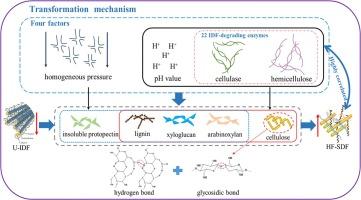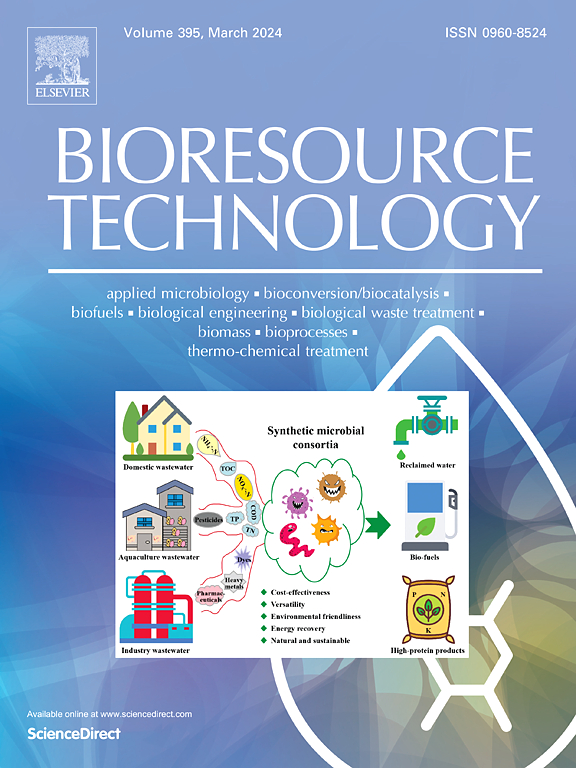Mechanism of promoting okara insoluble to soluble dietary fiber by high-pressure homogenization-microbial fermentation
IF 9.7
1区 环境科学与生态学
Q1 AGRICULTURAL ENGINEERING
引用次数: 0
Abstract
This study investigated the conversion of okara insoluble dietary fiber (IDF) to soluble dietary fiber (SDF) using high-pressure homogenization (HPH) combined with microbial fermentation. The conversion mechanism was analyzed from four aspects: correlation, proteomics, component and structure under. Results indicated a negative correlation between pH and SDF yield (r = -0.9885, p < 0.05), while cellulase and xylanase showed a positive correlation with SDF yield (p < 0.05). Proteomic analysis identified 22 key enzymes involved in IDF degradation. According to the composition and structure, the combined treatment effectively reduced the aggregation of IDF, promoting its transformation into SDF. HPH treatment primarily acted on the hemicellulose fractions in the amorphous region, while microbial fermentation broke hydrogen bonds between hydroxyl groups in the crystalline regions of cellulose, enhancing the conversion of more exposed cellulose. This study provided theoretical support for the development and utilization of okara IDF.

通过高压均质-微生物发酵将秋葵不溶性膳食纤维转化为可溶性膳食纤维的机理。
本研究探讨了利用高压均质(HPH)结合微生物发酵将秋葵不溶性膳食纤维(IDF)转化为可溶性膳食纤维(SDF)的过程。从相关性、蛋白质组学、组分和结构四个方面分析了转化机理。结果表明,pH 值与 SDF 产量呈负相关(r = -0.9885,p
本文章由计算机程序翻译,如有差异,请以英文原文为准。
求助全文
约1分钟内获得全文
求助全文
来源期刊

Bioresource Technology
工程技术-能源与燃料
CiteScore
20.80
自引率
19.30%
发文量
2013
审稿时长
12 days
期刊介绍:
Bioresource Technology publishes original articles, review articles, case studies, and short communications covering the fundamentals, applications, and management of bioresource technology. The journal seeks to advance and disseminate knowledge across various areas related to biomass, biological waste treatment, bioenergy, biotransformations, bioresource systems analysis, and associated conversion or production technologies.
Topics include:
• Biofuels: liquid and gaseous biofuels production, modeling and economics
• Bioprocesses and bioproducts: biocatalysis and fermentations
• Biomass and feedstocks utilization: bioconversion of agro-industrial residues
• Environmental protection: biological waste treatment
• Thermochemical conversion of biomass: combustion, pyrolysis, gasification, catalysis.
 求助内容:
求助内容: 应助结果提醒方式:
应助结果提醒方式:


